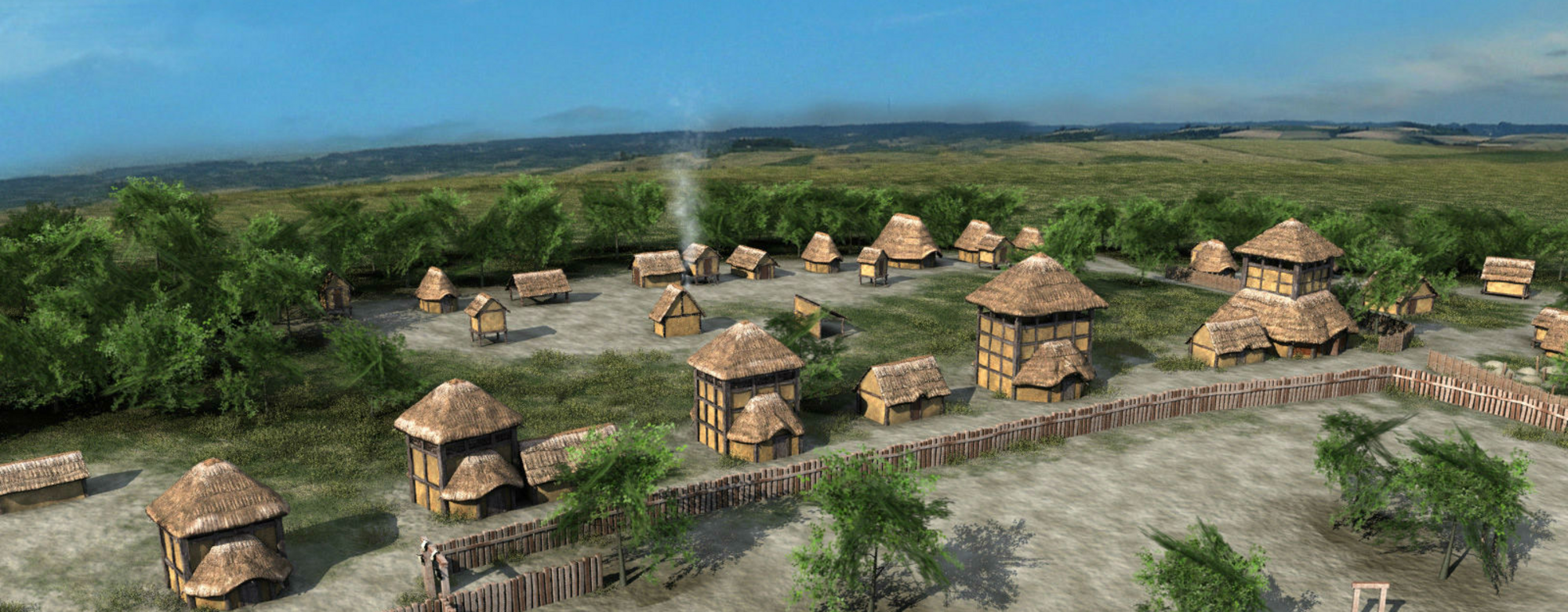
- Home
- The Gallic village
- Establishing the village
- Some highly unusual graves
Besides these highly unusual graves, the village has a number of other far from standard archaeological features, the result of specific religious practices. Several discoveries indicate this to be the correct interpretation. The strange grave of a young man, bound and killed by an axe blow to the head, is a remarkable find. His burial close to the dried corpses, a few metres from the building with the well in it, requires an interpretation taking account of all these facts.
Another combination of three seated burials and two specific structures, again an unusual ensemble, indicates that they were the result of common practice in the village. These individuals, like the previous ones, had received very specific treatment and their death was neither natural nor in battle. The treatment of their corpses and their placement within the settlement itself indicates sacrifice.
A strange death
If there is one person whose cause of death is clear, it has to be the man who, his hands tied behind his back, was killed by an axe blow to the right side of the head. He was quickly buried alongside the wall of a structure, his feet in an old grain pit, some twenty metres from the corpses buried in a rolled up position.
It seemed logical to search the graves in the necropolises to see if there were any tools of this type there. Several axes with eye handles were found in these individual tombs and one of these axes fitted perfectly into the skull wound.
While no link can be made between the seated corpses and this "murder victim", the context indicates that there must be some relationship, since he was killed when the well was filled in and his death could be the result of the violation of a recent prohibition (human sacrifice).
Seated gods and men
A seated position, either cross-legged or in the lotus position, is common to both gods and men at Acy-Romance. The depiction of men sitting cross-legged is a very ancient one, and several examples dating from the 5th century BC are known in southern Gaul. The question of whether these are statues of gods or mere mortals, warriors as their breastplates would imply, or even heroised ancestors, has not yet been settled.
A limestone statue found at Reims or nearby shows a naked person seated cross-legged. The arms are broken off at the shoulder and one can just see where a hand was attached to one knee. The body is leaning forward slightly and the beginning of a semi-circular mass is just visible on his back. The torso is marked with two parallel lines which look like a belt. The second sculpture, now in the Hotel Le-Vergeur Museum in Reims, shows a small figure seated cross-legged wearing a torc on his chest. Several similar sculptures from Gaul are known.
Also at Reims, the Saint-Remi Museum has the altar to Cernunnos, the Gallic god shown seated wearing deer antlers, dating from the Gallo-Roman period.
Two coin series
There are two coin series, unquestionably minted by the Remi tribe, which the discoveries at Acy-Romance have cast in a new light. The first series, issued in 120/100 BC, shows a small naked figure, hair twisted into a long plait, running to the right and holding a spear (or a flaming torch) in his left hand and a torc in the right. This is indisputably the same person found in the next coin series. He is shown full face, sitting cross-legged, holding a plait in his left hand and a torc and the other plait in his right.
Associated media
Open Media Library

Les trois inhumés assis

Individu sacrifié ?

Individu sacrifié ?

Reconstitution du coup de hâche

Individu sacrifié ?

Un des trois inhumés assis

Plan de localisation des inhumés assis

Bâtiment à trois nefs

Enclos palissadé

Partie sud de la cour des éleveurs (cour A).

Dieu gaulois

Le dieu Cernunnos assis

Statue de Roquepertuse

Personnage assis en tailleur provenant de Reims.

Guerrier nu courant

